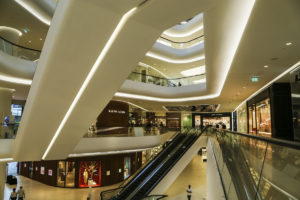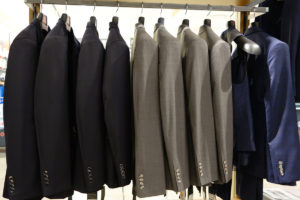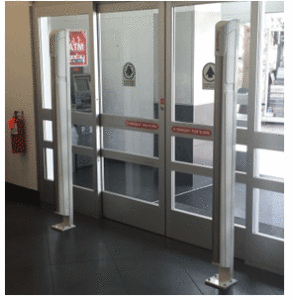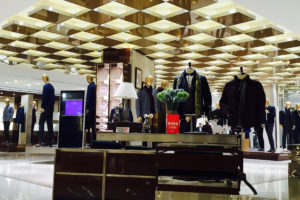It is not surprising that employee theft and shoplifting increases every year. With online “chat rooms” where shoplifters share their “methods” and the many ways they can get away with shoplifting, it is not surprising the losses across the globe are reaching staggering amounts.
In 2013, the losses due to shoplifting amounted close to $16 billion globally, a 34% increased over the previous year. The National Retail Security Survey revealed that in 2015 retail lost an approximate $45 billion due to shrinking, up by more than a billion from the previous year.
What are the expectations for 2016, and 2017? What will the losses amount to this year?
For more about this and other informational topics, follow the links below.
Employee Theft on the Rise According to Latest Retail Survey
Major retailers lost over $44 billion in thefts by customers and employees according to Jack L. Hayes International’s annual Retail Theft Survey.
Wesley Chapel, Fla. — Jack L. Hayes International, a leading loss prevention and inventory shrinkage control consulting firm, has released its 29th Annual Retail Theft Survey.
According to the survey, 438,000 shoplifters and dishonest employees were apprehended in 2016 by 23 large retailers who were able to recover over $120 million from the thieves.
“In 2016, dishonest employee apprehensions increased almost 10%, with the dollars recovered from these dishonest employees up nearly the same amount (9.3%). While shoplifting apprehensions and the dollars recovered from these shoplifters decreased ever so slightly, 0.2% and 0.9% respectively”, says Mark R. Doyle, president of Jack L. Hayes International.
According to the survey, one out of every 27 employees was apprehended for theft from their employer in 2016. The total number, 53,786, is an almost 10% increase compared to last year.
Over $42 million was recovered from dishonest employees in 2016, up 9.3% from 2015.
Survey participants apprehended 384,296 shoplifters in 2016, a slight decrease of 0.2% from the prior year. The average shoplifting case value in 2016 was $203.18, a slight decrease from 2015 when the value was $204.57.
C-stores may suffer from a bundle of cash-related issues, but tech-driven solutions are on the way.
One of the show-stopping numbers from the musical “Cabaret” includes the famous refrain, “Money makes the world go ’round.”
But money also makes the world of convenience retailing complicated. And problems such as cash miscounts, sticky-fingered employees and lack of data around dollars can stop the show for eager-to-perform operators who have to devote valuable time and resources to solving these snags.
To help shine a spotlight on the currency concerns c-store retailers face, CSP and Technomic conducted their seventh-annual cash-management report, commissioned by FireKing Security Group (complete results below). Finalized in March, the study surveyed 175 convenience operators who make or influence choices related to cash flow, banking and cash management in their stores. Thirty-seven percent of respondents operate one store, while 63% operate two or more locations.
Results from this year’s study reveal big concerns—and opportunities—for retailers’ cash-handling practices.
The Amazon Approach to Groceries Won’t Replace Stores
It’s a model that could thrive in dense, affluent areas. Most areas are neither dense nor affluent.
For a certain kind of urban professional, Amazon and Whole Foods are brands that define the consumption of staple goods: the weekly trip to pick up cheese, produce, maybe some pasture-raised organic beef; and the nice UPS man dropping off everything else, from toilet paper to truffle oil. On Friday, those folks learned that they are facing a future of truly one-stop shopping: Amazon.com Inc. plans to acquire Whole Foods Market Inc. for $13.7 billion.
But what about the rest of America? Well, if you happen to work for rival grocery chains, the news is not good. Competitors from Costco to Kroger to Dollar General saw significant chunks knocked off their market capitalization. Other casualties may include Walmart, the $15-an-hour minimum wage (Amazon is aggressively experimenting with cashierless stores), and the rather unique corporate culture that drives Whole Foods.

 A French Historian is accused of stealing American war heroes’ dog tags to sell on eBay.
A French Historian is accused of stealing American war heroes’ dog tags to sell on eBay.  I don’t know how many times I have heard it, but I have heard it said that shoplifting is not a crime that is premeditated. I have heard and read the arguments that dismiss the seriousness of the crime and portray the criminals as opportunists acting on the spur of the moment. Implicit in the argument is the minimizing of the extent of Organized Retail Crime rings as well as the willingness of shoplifters to steal from your customers. I have even had people who think along these lines voice their disapproval when I had shoplifters I had apprehended and was walking to my security office. I recall one occasion when I apprehended three young men, about 14 years of age and was by myself. I had them stand with their faces against the wall as I had to get my keys out to unlock the door to my office. Two men were sitting outside my office and one muttered under his breath that I was being a butt, only he used a more colorful adjective. I looked at him and told him to mind his own business. The point is that there are people more sympathetic to the criminals than retailers and see shoplifting as a minor infraction at worst and mischievous behavior at best. The attitude among those that hold to those beliefs might change if they realized that these shoplifters aren’t necessarily choosy about who they steal from. They also don’t consider the safety risks posed by the careless acts of these criminals.
I don’t know how many times I have heard it, but I have heard it said that shoplifting is not a crime that is premeditated. I have heard and read the arguments that dismiss the seriousness of the crime and portray the criminals as opportunists acting on the spur of the moment. Implicit in the argument is the minimizing of the extent of Organized Retail Crime rings as well as the willingness of shoplifters to steal from your customers. I have even had people who think along these lines voice their disapproval when I had shoplifters I had apprehended and was walking to my security office. I recall one occasion when I apprehended three young men, about 14 years of age and was by myself. I had them stand with their faces against the wall as I had to get my keys out to unlock the door to my office. Two men were sitting outside my office and one muttered under his breath that I was being a butt, only he used a more colorful adjective. I looked at him and told him to mind his own business. The point is that there are people more sympathetic to the criminals than retailers and see shoplifting as a minor infraction at worst and mischievous behavior at best. The attitude among those that hold to those beliefs might change if they realized that these shoplifters aren’t necessarily choosy about who they steal from. They also don’t consider the safety risks posed by the careless acts of these criminals. Preventing shoplifting is by far one of the major problem for big retailers. For the small retail store, shoplifting takes on a different meaning.
Preventing shoplifting is by far one of the major problem for big retailers. For the small retail store, shoplifting takes on a different meaning.
 When I was a Loss Prevention Manager we would catch a shoplifter or a dishonest employee and recover merchandise. Depending on the type of case we would sometimes hold the evidence for a few days until the court hearing other times it could be much longer. If a shoplifter refused to plead guilty or requested a jury trial cases could be held up for months if not longer. I had several cases that went on for more than a year. Felony shoplifting cases and juvenile cases in our jurisdiction often meant lengthy wait periods depending on caseloads in the court. I also recall at least one shoplifting case in which the lawyer for the defendant requested extensions three separate times hoping that I would not appear for the hearing and the case would be dropped. No dice, I showed up for each hearing and finally the lawyer entered a guilty plea. The problem with the lengthy cases was that we would have to hold the evidence until the cases were settled. In some situations the police department held the recovered merchandise, such as when they stopped the suspect after the suspect fled the store. When merchandise has to be held for long periods it is possible for it to sit in evidence and be forgotten about. For stores that are too small to have security or Loss Prevention Departments management may be storing that evidence and no one is thinking about following up on cases with their police department or court.
When I was a Loss Prevention Manager we would catch a shoplifter or a dishonest employee and recover merchandise. Depending on the type of case we would sometimes hold the evidence for a few days until the court hearing other times it could be much longer. If a shoplifter refused to plead guilty or requested a jury trial cases could be held up for months if not longer. I had several cases that went on for more than a year. Felony shoplifting cases and juvenile cases in our jurisdiction often meant lengthy wait periods depending on caseloads in the court. I also recall at least one shoplifting case in which the lawyer for the defendant requested extensions three separate times hoping that I would not appear for the hearing and the case would be dropped. No dice, I showed up for each hearing and finally the lawyer entered a guilty plea. The problem with the lengthy cases was that we would have to hold the evidence until the cases were settled. In some situations the police department held the recovered merchandise, such as when they stopped the suspect after the suspect fled the store. When merchandise has to be held for long periods it is possible for it to sit in evidence and be forgotten about. For stores that are too small to have security or Loss Prevention Departments management may be storing that evidence and no one is thinking about following up on cases with their police department or court.

 If you were asked what area of your store would present the most opportunity for employee theft and fraud, what would you answer? The checkout lanes where cashiers have access to the register, the ability to pass merchandise,
If you were asked what area of your store would present the most opportunity for employee theft and fraud, what would you answer? The checkout lanes where cashiers have access to the register, the ability to pass merchandise,
